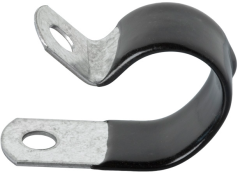Why Should You Use Electric cable conduit?
An electric cable conduit is a piping system used to protect and route electrical wiring. It is typically made of metal or plastic and is used to protect the wires from any environmental conditions that could cause damage or create a safety hazard. It is also used to reduce electromagnetic interference. Electric cable conduit is used in residential, commercial, and industrial applications and is available in a variety of sizes and materials.
What is Electrical Conduit?
An electrical conduit is a metal or plastic tubing used to protect and route electrical wiring in a building or structure. The tubing is available in rigid or flexible forms and is typically either metallic or non-metallic. It is used to protect wires from damage, to support and hold wires, and to provide a place to connect connections and terminate wiring.
Types of Electric Cable Conduit
- Rigid Metal Conduit (RMC)
- Intermediate Metal Conduit (IMC)
- Electrical Nonmetallic Tubing (ENT)
- Flexible Metal Conduit (FMC)
- Liquidtight Flexible Metal Conduit (LFMC)
- Electrical Metallic Tubing (EMT)
- Flexible Nonmetallic Conduit (FNC)
- Liquidtight Flexible Nonmetallic Conduit (LFNC)
- PVC Conduit
- Corrugated Flexible Tubing (CFT)
Benefits
- Increased Safety – Electric cable conduits provide an added layer of protective covering for electrical wiring, helping to reduce the risk of an electrical fire, shocks, and other accidents.
- Space Savings – Electric cable conduits are designed to be compact and efficient, helping to save space in the home or commercial building.
- Protection from the Elements – Electric cable conduits provide an extra layer of protection from the elements, such as rain, snow, and wind. This helps to keep electrical wiring and components safe from damage.
- Easy to Install – Electric cable conduits are usually very easy to install and require minimal effort.
- Cost Savings – Electric cable conduits are typically cheaper than other types of protective wiring covers. This can help to save money over the long-term.
Specifications
- Material: PVC, aluminum, stainless steel, galvanized steel, etc.
- Diameter: 4mm to 150mm
- Length: 1m to 12m
- Color: Grey, white, black, blue, etc.
- Electrical Strength: ≥5kV/mm
- Temperature Rating: -20°C to +105°C
- Fire Rating: Self-extinguishing
- Flexibility: Easily bent and shaped
- Corrosion Resistance: Resistant to acids and alkalis
- UV Resistance: Resistant to UV radiation
Installing Electric Cable Conduit
- Determine the route your conduit will take.
- Cut the conduit to the necessary lengths.
- Drill the holes where you will run the conduit.
- Install conduit boxes at each end of the conduit.
- Pull the wires through the conduit.
- Secure the conduit to the wall or ceiling.
- Connect the wires to the necessary devices.
- Test the circuit to ensure proper operation.




